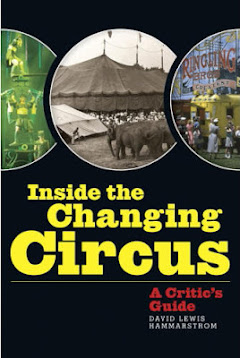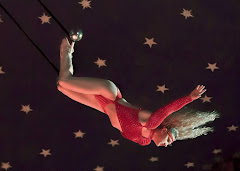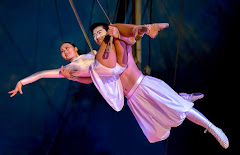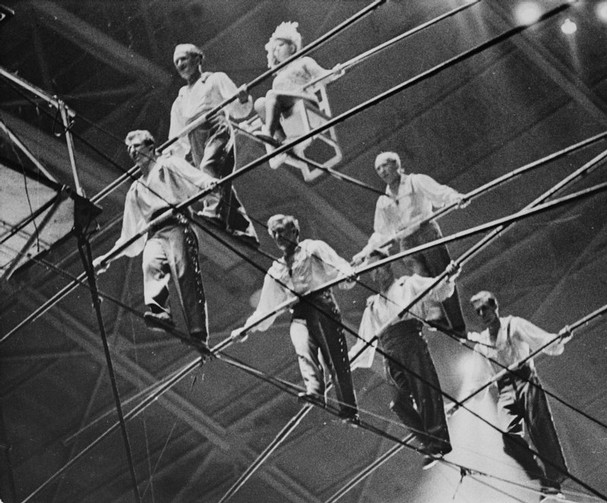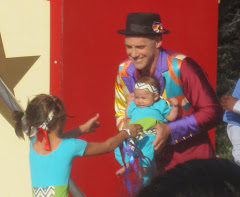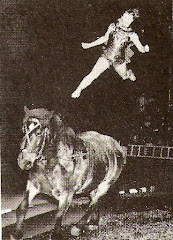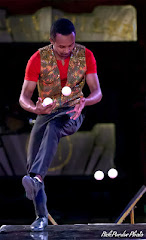Ever wish you could have seen Mary Martin in South Pacific? If you’re willing to be the only person in the theatre, now you can. But if grainy black and white film leaves you wanting, link in a blink to a front row seat at the glorious Lincoln Center revival of 2008.
And give your regards to YouTube!
Blessed with one of Broadway’s greatest scores ever, and with the courage to explore the perilous intersection of love and racial prejudice, Rodgers and Hammerstein’s 1949 hit,
South Pacific, became the second longest-running Broadway musical at the time (behind only another, longer-running, R&H smash, Oklahoma), and was awarded a Pulitzer prize for drama.
When it was revived, in 2008, at Lincoln Center, under the direction of Bartlett Sher, I was won over by the production’s shimmering professionalism — 36 musicians in the pit, expansive sets that seemed to extend clear across the sea. So thrilling, indeed, that I returned to New York the following year to see the show once again (from, as I would luck out, a superior seat), and liked it even more.
Keep in mind, for the point of this post, that I was watching it from a single fixed position.
Was it really that good?
No musical is perfect, not even South Pacific. They are best seen in the medium for which they were conceived. On film in 1958, South Pacific fairly sustained its glowing reputation. On television in 2001, with Glen Close playing (or slaying) the role of Nellie Forbush, it did not.
There is now a third emerging venue for Broadway addicts — viewing filmed performances of musicals. You can watch the Live From Lincoln Center film of South Pacific, broadcast on PBS in 2010, all the way through without breaks, on YouTube. But beware: Multiple camera angles and closeups will be telling you where to look every beat of the way. And you may find yourself gazing up close at something you have long admired, only to discover flaws in the fabric. Or rather, in this particular fabric. Here are some of my reactions to the 2008 revival:
Some assets:
*
Amdrew Samonsky's Lt. Joseph Cable marks the best acting performance in the show. Although I miss his predecessor Matthew Morrison's stronger rendition of "Younger than Springtime," Samonsky's uniquely wrought Cable is even more impressive here.
*
Loretta’s Ables Sayre’s Bloody Marry also favors a grittier realism, which deepens the tension in her angry confrontation with Cable over his refusal to marry Liat. Another bravo performance.
* My Girl Back Home: How lucky we are to have this song! It was dropped out of town from the original New York bound production, reinstated in the 1958 movie, as it is here. The number's poignant innocence marks the genius of Dick and Oscar in mining lyrical gold from common ordinary moments between common ordinary people. My brother Dick pointed out to me how Oscar Hammerstein, tellingly, did not write, for Cable to sing, “I loved her a lot,” but “I
liked her a lot.”
* More realism in the wartime atmosphere and military scenes, credit advanced stage technology.
Some drawbacks:
* Kelly O’Hara’s Nellie Forbush suffers a little from the SC factor: squeaky clean.
* Paulo Szot’s Emile DeBeque is just okay. In closeups, Szot looks more like a fine singer dutifully acting than a fine actor having lost himself in the role. Nor does Szot bring the illusion of advanced age to the role that Ezio Pinza did in the original.
* Between O’Hara and Szot, then, there is little age difference on the surface, thus rendering mute the younger woman-older man theme from the original that strengthened the show’s social daring-do. Easy to imagine the producers shunning this issue in order not to alienate all of those young girls out there said to keep Times Square ticket windows humming.
* Danny Burstein’s funny-to-fading Luther Billis disappoints: Burstein starts out on a strong comedic note in “Nothing Like a Dame,” but then proceeds to slowly lose levity, as his persona hardens into the second act, making his drag scene in “Honey Bun” more a drag than a laugh.
* Tediously long military dialogue: My biggest gripe with Oscar Hammerstein has been the excessive stretches of dialogue that mark his librettos. Example here, Billis getting reprimanded for his shenanigans at sea. This labored office encounter could have been dispensed with in less than half the lines.
WATCHING MARY MARTIN IN SOUTH PACIFIC
She, too, now lives on in YouTube, albeit, in a black and white film of the 1951 London production at Theatre Royal, Drury Lane, said to have been a virtual duplicate of the Broadway original, but without an audience present. The show was filmed in 16mm on Tuesday, May 6, 1952, by four cameras, one placed in the balcony of the theatre. The quality of the film is rough, not all scenes ideally -- or even quite fully -- framed. For music theatre buffs, however, watching this may feel akin to discovering a long-lost and very rare archeological dig. Writing about it in Playbill, Steven Suskin justly hails “Mary Martin's legendary performance; not a Hollywood version, reconfigured for the screen, but Mary doing precisely what she did on stage when South Pacific first opened”
Martin proves herself all over again. Sugar in her heart, yes-maybe, but deep down in them there bones, there is vinegar, too. ( She debuted on Broadway in a racy 1938 Cole Porter Musical, singing “My Heart Belongs to Daddy,” waking up the next morning a star.) I had never fully realized what a great actor she was, not just a musical theatre superstar, until now. She IS Nellie Forubsh. Another revelation is her terrific way with dancing, as full of magical animation as a Disney carton. A miracle of mirth in motion. Has there ever been anyone like her? Will there ever be again?
Some other impressions.
Balli Ha'i: A song that I have long regarded as lovely if a tad long – I now regard as phenomenal, thanks to
Murel Smith’s powerfully embracing rendition of the number, lifting it, and practically the entire theatre, into a transcendent mystical realm. Little wonder hers would be the singing voice lip synced by Juanita Hall in the 1958 film.
Major miscasting: Peter Grant, as Lt. Cable, delivers his songs well, but cuts a remarkably ineffectual figure. On the upside,
Fredd Wayne’s warmly amusing Luther Billis is about as funny as would Phil Silvers have been, had he played the role.
Well paired: Wilbur Evans merges fine acting with commanding vocals to forge a persuasively earnest DeBeque, making him an ideal match for Martin.
Even Tony and Maria didn't hit the sack this fast, or did they? The Cable- Liat overnight romance in a dubiously pay-as-you-lay-setting, neither speaking the other's language, continues to strain credibility. Of course, all is forgiven given the glorious younger-than-springtime that follows, right?
Prolonged military strategy scenes, especially in Act II,
are even more tedious here than those in Bartlett Sher’s Lincoln Center staging, stopping the show dead in its tracks. But, then again, with no audience in the house, you are at a major disadvantage, it being understood that audience reactions influence our own reactions. Well, all of us except for maybe John Simon.
All of this having been said, just being able to see Mary Martin in the bloom of this great American musical is a true and lasting treasure.
When I talked up the Lincoln Center revival with my brother, urging him to consider flying back to New York to see it, I tempered my enthusiasm with this caveat:
“However, I should tell you — it is
still South Pacific.”
Well, no, I should have added, “It is still South Pacific – minus Marty Martin”
https://www.youtube.com/watch?v=M7pzkQr1SO8
1.24.15













